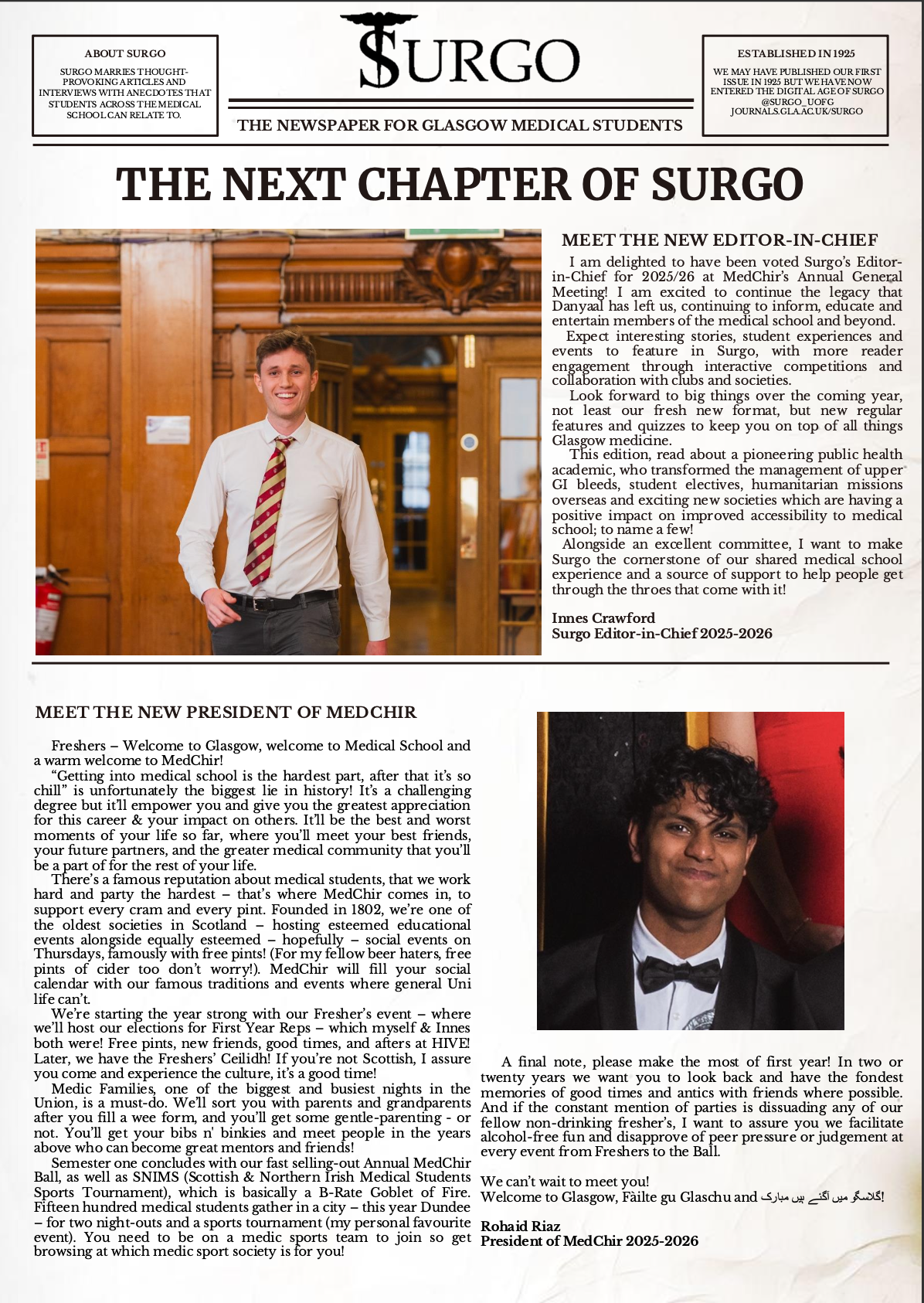The Professor Stuart McDonald Anatomy Drawing Award
DOI:
https://doi.org/10.36399/Surgo.3.653Abstract
Professor Stuart McDonald was professor of Forensic and Clinical Anatomy at the University of Glasgow for over forty years and taught anatomy to numerous medical, dental and science students during his lifetime. To commemorate his invaluable memory, the Head and Neck anatomy drawing award was created. The intricacy and organic art of the human body is admirable to many, if not all students who study anatomy, and this award is a touching reminder of the indispensable relationship between art and science.
The award is open each year for all year two Medical Students, year three Dentistry Students and year three BSc Honours Anatomy Students with the winner being awarded a prize of £200 and a certificate of achievement. The judges’ criteria included originality, creativity and anatomical accuracy – which were used when deciding upon a winner.
The winner of this year's award was current Year three Medical Student Elliot McColgan for his original and intricately labelled pencil drawing of the muscles of facial expression. I would also like to congratulate the two joint runners up Zainab Mahmod and Ameerah Gardee as well as highly commended Linda McVey, Ruby McGill and Zaren Nacario. Each student's entry displayed an impressive level of creativity and talent.
I managed to speak to Elliot, who explained that he drew his admission during the lighter final week of the Head Neck and Neuro block, and this allowed him to dedicate more time to his art. As this was the last week of teaching before the Easter break, Elliot commented that the process of creating his drawing was a helpful way to consolidate his understanding of the position and unique function of each muscle associated with facial expression. Drawn in coloured pencil, Elliot said he chose this as his preferred medium as it was the most efficient way to add the layers of detail needed to accurately depict the muscles of facial expression. There is so much content to learn and memorise when studying human anatomy, so it can be helpful to explore a variety of learning techniques. This could include drawings, paintings, mind-maps, flashcards, mnemonics, learning in groups of friends, teaching others or even creating games. Each student will find different methods more effective than others, and it is appreciable that the University of Glasgow actively encourages all Anatomy students to incorporate drawing and art into weekly learning. The introduction of the Stuart McDonald Anatomy Drawing award is a genuine celebration of the interconnectedness of art and science.
For as long as I can remember I have loved art. I think this partly fuelled my interest in medicine as fundamentally, it integrates both scientific and artistic principles. There is not always a formula or ‘correct answer’. This is perhaps best seen in holistic healthcare, where evidence-based medicine is balanced with an emphasis on patient individuality, considering their physical, social and psychological needs. This appreciation for the mix between subjectivity and precision has shaped my interest in pursuing a career in plastic surgery and is ultimately why I chose to focus on the muscles of facial expression. It strengthens knowledge that will be essential later on and explores an aspect of human anatomy I find fascinating. Drawing has become an enjoyable and rewarding method of learning that I have incorporated into my revision. It allows me to look at things from a different, more detailed, perspective. This process led me to an ongoing discussion, whether the muscle of facial expression, ‘Depressor Supercilii’ is a distinct muscle, contributing to eyebrow depression, or actually part of ‘Corrugator Supercilii’ or ‘Orbicularis Oculi'. Engaging with this broadened my overall appreciation of the anatomy and highlighted that medicine is full of nuance and interpretation. To me, that is where its artistry stands out.


